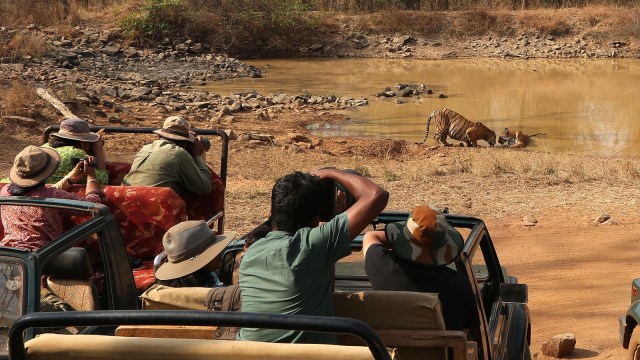Tiger safari on non-forest land, no night tourism: Supreme Court
Top court bans commercial mining in buffer, fringe areas.
 The Supreme Court verdict aimed at reversing largescale ecological damage inside tiger reserves. (File)
The Supreme Court verdict aimed at reversing largescale ecological damage inside tiger reserves. (File)The Supreme Court on Monday directed that tiger safaris shall be established only on “non-forest land or degraded forest land in buffer areas provided they are not part of a tiger corridor.”
Penning the 80-page verdict, Chief Justice of India B R Gavai issued a slew of directions – running into 28 pages – aimed at reversing large-scale ecological damage inside the tiger reserves.
A bench of Chief Justice of India (CJI) BR Gavai and Justices AG Masih and AS Chandurkar, which accepted the recommendations of an expert committee appointed by it to examine the ecological violations inside the Jim Corbett Tiger Reserve in Uttarakhand, “categorically held that tiger safari shall not be permitted in the core or a critical tiger habitat area.”
In its order, the bench said that the tiger safari “shall be allowed only in association with a full-fledged rescue and rehabilitation centre for tigers where conflict animals, injured animals or abandoned animals are housed for rehabilitation.”
On the extent of Eco-Sensitive Zones (ESZs) for the tiger reserves, it said “the formulation of ESZs for these tiger reserves will abide by the letter dated 23rd April 2018 issued by the MoEF&CC which clarifies that the minimum area comprised in the ESZs will be the buffer or fringe area of the Tiger Reserve.” It also directed that all tiger reserves must have notified ESZs within one year.
The apex court ruled that commercial mining, sawmills, polluting industries, commercial firewood use, major hydroelectric projects, introduction of exotic species, hazardous substance production, low-flying aircraft and tourism aircraft, waste discharge into natural ecosystems and tree felling without permission from appropriate authorities shall be prohibited in the buffer and fringe areas.
Activities like widening of roads and movement of vehicular traffic at night will be allowed subject to regulations.
The court said that development of tourism infrastructure in buffer zones should be regulated in accordance with the ESZ notifications issued under the Environment (Protection) Act 1986.
“Ecotourism cannot resemble mass tourism and must be adequately regulated…New eco-friendly resorts may be allowed in buffer but shall not be allowed in an identified corridor” the bench said, adding “Homestays and community-managed establishments should be encouraged and incentives should also be given to them.”
The Supreme Court also prohibited the use of mobile phones within tourism zones at the core habitat of tiger reserves and directed a complete ban on night tourism.
“In those tiger reserves where roads traverse the core/critical tiger habitat, strict night regulation (no traffic from dusk to dawn except ambulances/emergency) needs to be exercised,” the court said.
The Supreme Court also asked states to prepare or revise Tiger Conservation Plans within three months and notify core and buffer areas within six months.





- 01
- 02
- 03
- 04
- 05


























